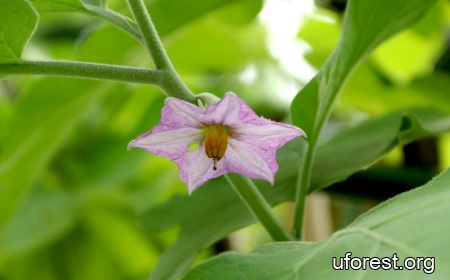Solanum melongena L.
| Etymology | Genus | Solace; referring to the narcotic properties of certain species |
|---|---|---|
| Species | From Greek melongénē, meaning “mad apple” or “eggplant.” | |
| Family | Solanaceae | |
| Synonyms | Solanum oviferum Nocca, Solanum ovigerum Dunal | |
| Common Names | Eggplant, Brinjal, Baigan, Aubergine | |
| Status | Exotic: Cultivated Only | |
| Form | Herb | |
| Native Distribution | West Indian Ocean, Tropical & Subtropical Asia | |
Diagnostics:
A herb that is cultivated for its edible fruit. It has hairy leaves that are slightly lobed. The fruit is purple and is either bulbous or elongated.
Interesting Facts:
The edible fruit is spongy and contains 92% water (United States Department of Agriculture, n.d.). The purple colouration of the eggplant's skin is due to nasunin, an anthocyanin (Noda et al., 2000).

Within a community garden in Punggol Park (2025).

Leaf underside.

Flower.

Bulbous fruit form.

Elongated fruit form.
References
United States Department of Agriculture. (n.d.). FoodData Central: Food details (FDC ID 169228) Nutrients, https://fdc.nal.usda.gov/food-details/169228/nutrients. Accessed 13-Oct-2025.
Noda, Y., Kneyuki, T., Igarashi, K., Mori, A., & Packer, L. (2000). Antioxidant activity of nasunin, an anthocyanin in eggplant peels. Toxicology, 148(2–3), 119–123.
Author: Siyang
Posted: 2025-10-25 / Modified: 2025-10-27